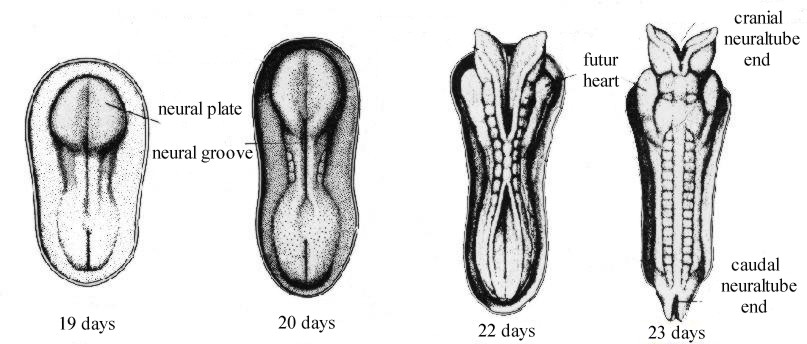What is a neural tube defect?
Anencephaly is due to failure of primary neurulation (neurulation is the process which progenitors of the central nervous system are shaped, separated from and brought beneath the epidermis). In the normal human embryo, the neural plate arises approximately 18 days after fertilization. During the fourth week of development, the neural plate invaginates along the embryonic midline to form the neural groove. The neural tube is formed as closure of the neural groove proceeds from the middle of the groove and progresses toward the ends in both directions, with completion between day 24 for the cranial end and day 26 for the caudal end. Disruptions of the normal closure process give rise to neural tube defects. Anencephaly results from failure of neural tube closure at the cranial end of the developing embryo. Absence of the brain and calvaria may be partial or complete.

Developpement of the neural tube

Sagital section of neural plate becoming the neural tube
 |
 |
 |
 |
| flatplate stage | deepening neural groove | neural folds in apposition | neural tube formed |
Neural tube closure: sagital sections of 1-cell frog embryos
(click on the tumbnails to enlarge the pictures)
pictures used with the permission of Lance Davidson
References:
Sadler TW, 1998. Mechanisms of neural tube closure and defects. Ment Retard Dev Disabil Res Rev 1998;4:247-53
Sadler TW. 2005. Embryology of Neural Tube Development. American Journal of Medical Genetics Part C 135C:2-8
Last updated Mai 1, 2019


















